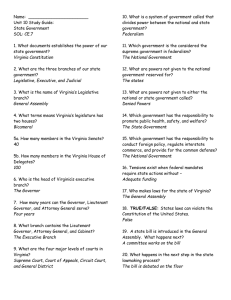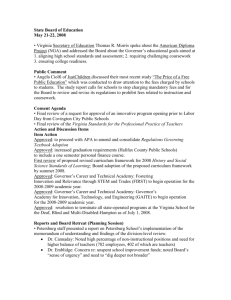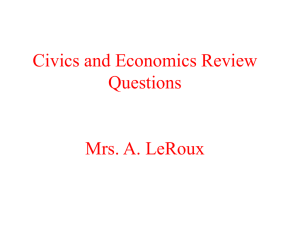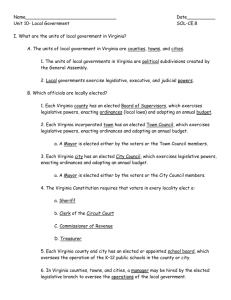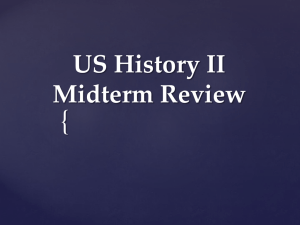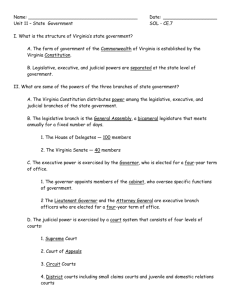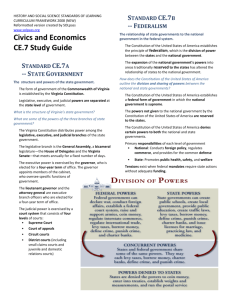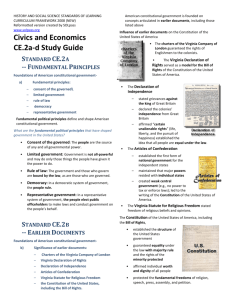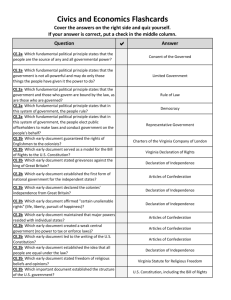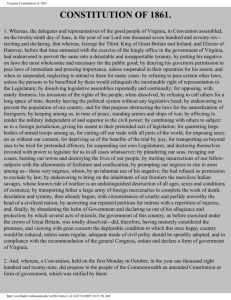Name - Henry County Public Schools
advertisement
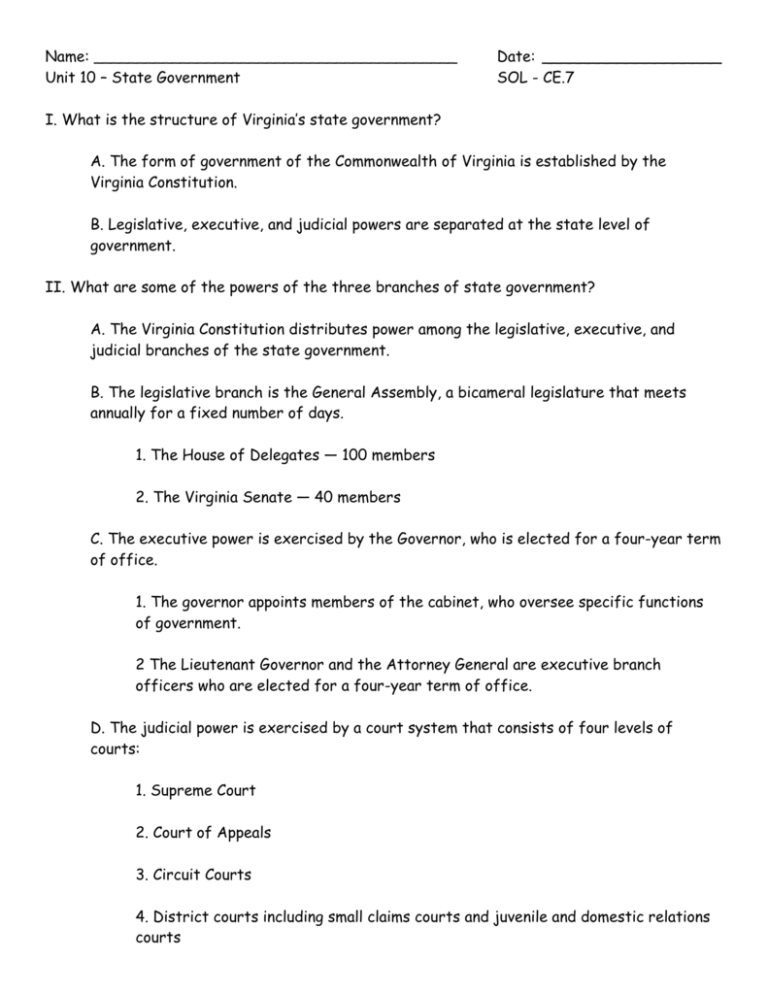
Name: __________________________________________ Unit 10 – State Government Date: ___________________ SOL - CE.7 I. What is the structure of Virginia’s state government? A. The form of government of the Commonwealth of Virginia is established by the Virginia Constitution. B. Legislative, executive, and judicial powers are separated at the state level of government. II. What are some of the powers of the three branches of state government? A. The Virginia Constitution distributes power among the legislative, executive, and judicial branches of the state government. B. The legislative branch is the General Assembly, a bicameral legislature that meets annually for a fixed number of days. 1. The House of Delegates — 100 members 2. The Virginia Senate — 40 members C. The executive power is exercised by the Governor, who is elected for a four-year term of office. 1. The governor appoints members of the cabinet, who oversee specific functions of government. 2 The Lieutenant Governor and the Attorney General are executive branch officers who are elected for a four-year term of office. D. The judicial power is exercised by a court system that consists of four levels of courts: 1. Supreme Court 2. Court of Appeals 3. Circuit Courts 4. District courts including small claims courts and juvenile and domestic relations courts III. How does the Constitution of the United States of America outline the division and sharing of powers between the national and state governments? A. The Constitution of the United States of America establishes the principle of federalism, which is the division of power between the states and the national government. B. The Constitution of the United States of America establishes a federal form of government in which the national government is supreme. C. The powers NOT given to the national government by the Constitution of the United States of America are reserved to the states. D. The Constitution of the United States of America denies certain powers to both the national and state governments. E. Primary responsibilities of each level of government 1. National: Conducts foreign policy, regulates commerce, and provides for the common defense 2. State: Promotes public health, safety, and welfare F. The expansion of the national government’s powers into areas traditionally reserved to the states has altered the relationship of states to the national government. 1. Tensions exist when federal mandates require state actions without adequate funding. IV. Which branch of the Virginia state government has the power to pass laws? A. Members of the Virginia General Assembly are elected to make state laws. B. Elected officials in the Virginia General Assembly write laws and take action in response to problems or issues. C. Individuals and interest groups help shape legislation. V. How does the Virginia General Assembly make laws? A. The lawmaking process in the Virginia General Assembly 1. Introducing a bill 2. Working in committees 3. Debating the bill on the floor of each house 4. Voting on the bill in each house 5. Sending the bill to the Governor to sign into law B. The primary issues in the legislative process at the state level 1. Education: To promote an informed and engaged citizenry a. Establish minimum standards for local schools 2. Public health: To promote and protect the health of its citizens a. Fund health benefits 3. Environment: To protect natural resources a. Improve water quality in the Chesapeake Bay 4. State budget: To approve a biennial (two year) budget prepared by the Governor 5. Revenue: To levy and collect taxes VI. What are the roles and powers of the executive branch at the state level? A. The executive branch of the Virginia state government enforces the laws and plays a key role in the policymaking process. B. The Governor of Virginia exercises the formal powers granted by the Virginia Constitution. C. Cabinet secretaries and departments, agencies, commissions, and regulatory boards administer laws, enforce laws, regulate aspects of business and the economy, and provide services. D. In carrying out both the formal and informal powers of the office, the governor fills several roles, including: 1. Chief of State: Ceremonial head of the state government 2. Chief Legislator: Proposer of the state legislative agenda 3. Chief Administrator: Head of the executive branch of the state government 4. Party Chief: Head of the political party in control of the state executive branch 5. Commander-in-Chief: Head of the state’s armed forces

